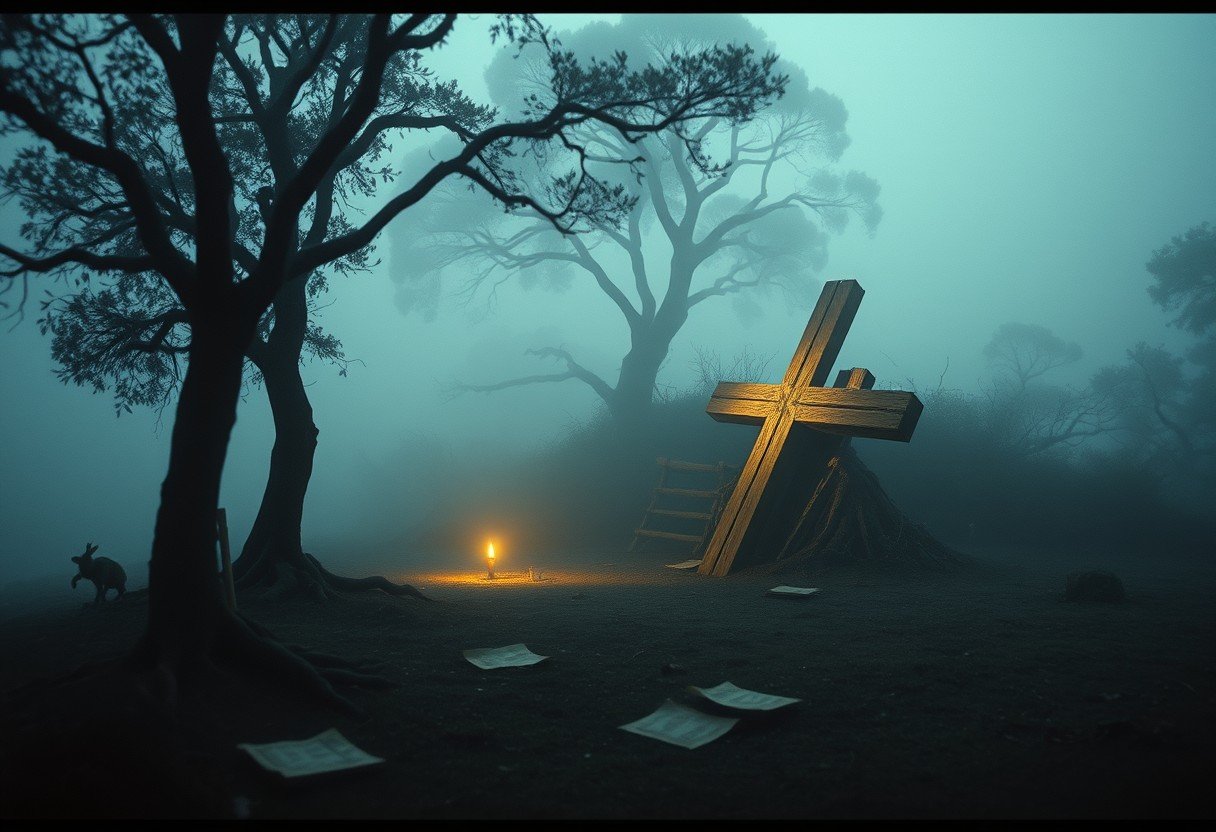For over two centuries, treasure hunters have been drawn to Oak Island, a small piece of land off Nova Scotia, Canada. This enduring quest began in 1795 when teenagers found a strange depression in the ground, sparking legends of buried pirate treasure. The mystery involves intricate theories, complex engineering challenges, and a relentless pursuit of what might be the world’s greatest hidden fortune.
The Legend of the Money Pit
The entire Oak Island mystery revolves around a central feature known as the Money Pit. It’s not just a hole; it’s the legendary site where the treasure is believed to be hidden, first discovered by a group of teenagers in 1795.
This discovery ignited a treasure hunt that has now spanned more than 225 years, attracting countless individuals and syndicates who have poured millions of dollars into excavation efforts. The pit itself has become a legend, a man-made puzzle that has resisted every attempt to unlock its secrets.
The structure of the Money Pit is famously complex, with layers of oak platforms found at regular intervals. Early diggers reported finding these platforms every ten feet. This careful construction suggests a deliberate and sophisticated effort to bury something of immense value and protect it from ever being found.
Early Treasure Hunters and Their Discoveries
The first serious excavation was started by the young discoverers, Daniel McGinnis, John Smith, and Anthony Vaughan. Their initial efforts were quickly halted by the sheer scale of the project, but they laid the groundwork for all future searches.
Over the next century, various groups took up the challenge. These early excavations were plagued by setbacks, most notably the ingenious booby traps that caused the pit to flood with seawater. Despite these obstacles, tantalizing clues were found, including coconut fiber, tool marks, and a stone slab allegedly inscribed with strange symbols.
Even famous figures were drawn to the mystery. Franklin D. Roosevelt, long before he became president, was part of a syndicate that explored the island in the early 20th century. His lifelong interest in the legend highlights the island’s powerful allure that captures the imagination of people from all walks of life.
What Could Be Buried on Oak Island?
The speculation about what lies at the bottom of the Money Pit is as vast as the ocean surrounding the island. The theories are a mix of historical fact, folklore, and pure imagination, which only adds to the intrigue.
Each theory provides a different lens through which to view the mystery, connecting the small Canadian island to major world events and legendary figures. These stories keep the hope alive for searchers.
Some of the most popular theories include:
- Pirate Treasure: Many believe the hoard belongs to infamous pirates like Captain Kidd or Blackbeard, who may have used the island to hide their immense loot.
- The Knights Templar Hoard: A more elaborate theory suggests that the Knights Templar hid religious artifacts, such as the Holy Grail or the Ark of the Covenant, on the island after fleeing persecution in Europe.
- Lost Shakespearean Manuscripts: Some speculate that Sir Francis Bacon buried original manuscripts of William Shakespeare’s plays to protect them.
- The French Crown Jewels: Another theory proposes that the jewels were hidden on the island during the French Revolution.
While no single theory has been proven, artifacts like old coins, crosses, and remnants of structures continue to fuel these exciting possibilities.
Engineering Puzzles and Booby Traps
One of the most compelling aspects of the Oak Island legend is the sophisticated engineering used to protect the treasure. The most famous of these are the flood tunnels, a complex system of channels designed to fill the Money Pit with seawater.
These tunnels are believed to be connected to nearby Smith’s Cove and have thwarted nearly every major excavation attempt. As soon as diggers reach a certain depth, water rushes in, making further progress impossible without massive and expensive pumping operations.
The existence of these booby traps raises critical questions about who could have built them. The level of engineering required would have been extraordinary for the 17th or 18th century, suggesting a well-funded and highly organized group was behind the original deposit.
Modern Technology Joins the Hunt
In recent years, the treasure hunt has been revolutionized by modern technology. Brothers Rick and Marty Lagina, the current leaders of the search and stars of the TV show “The Curse of Oak Island,” have brought a scientific approach to the mystery.
By using cutting-edge tools, they can analyze the island in ways previous searchers could only dream of. This has led to numerous new discoveries and has helped pinpoint areas of interest with greater accuracy.
| Technology | Purpose in the Oak Island Search |
|---|---|
| Ground-Penetrating Radar (GPR) | To create images of what lies beneath the surface without digging. |
| Sonar Imaging | Used in boreholes and flooded areas to map underwater cavities and objects. |
| Magnetometry | To detect metal objects buried deep within the ground. |
| Water Analysis | To trace the source of the flood tunnels by testing for gold, silver, and other elements. |
These technologies have helped uncover old structures, mysterious metal objects, and even traces of human remains, keeping the centuries-old hunt alive and more exciting than ever.
The Cultural Impact of the Oak Island Quest
The Oak Island mystery has become a global phenomenon, largely thanks to the popular television series “The Curse of Oak Island.” The show has brought the story to a massive international audience, creating a new generation of enthusiasts.
This has had a profound impact on treasure hunting in general, inspiring many amateurs to explore local legends and history in their own communities. The show masterfully blends history, science, and the thrill of the unknown, making archaeology and exploration accessible to everyone. It demonstrates the power of perseverance and the deep human desire for discovery.
Beyond television, the story has been the subject of numerous books, documentaries, and online forums where fans from around the world share theories and discuss the latest findings. The legend is no longer just a local tale; it’s a shared cultural experience that continues to grow with each new season of searching.
Frequently Asked Questions about the Curse of Oak Island
What is the Oak Island treasure hunt about?
The Oak Island treasure hunt is a search for legendary buried treasure on a small island off the coast of Nova Scotia, Canada. The search has been ongoing since 1795 and involves solving the mystery of the “Money Pit,” a deep, booby-trapped shaft where the treasure is said to be hidden.
What are the main theories about the Oak Island treasure?
The most popular theories suggest the treasure could be pirate loot from figures like Captain Kidd, the lost riches of the Knights Templar including the Holy Grail, Marie Antoinette’s jewels, or even lost manuscripts of William Shakespeare.
How long has the search on Oak Island been going on?
The treasure hunt has been active for over 225 years, starting in 1795. This makes it one of the longest and most famous treasure hunts in the world, attracting numerous groups and individuals over the centuries.
Have they found any real treasure on Oak Island?
While a massive treasure hoard has not been found, searchers have discovered many significant artifacts. These include old coins, a lead cross with potential Templar connections, remnants of structures, and other objects that suggest a significant historical operation took place on the island long ago.
What makes searching on Oak Island so difficult?
The primary difficulties are the island’s complex geology and the presence of man-made booby traps. The most famous is a system of flood tunnels that intentionally fill the main excavation site, the Money Pit, with seawater when diggers reach a certain depth.






Leave a Comment